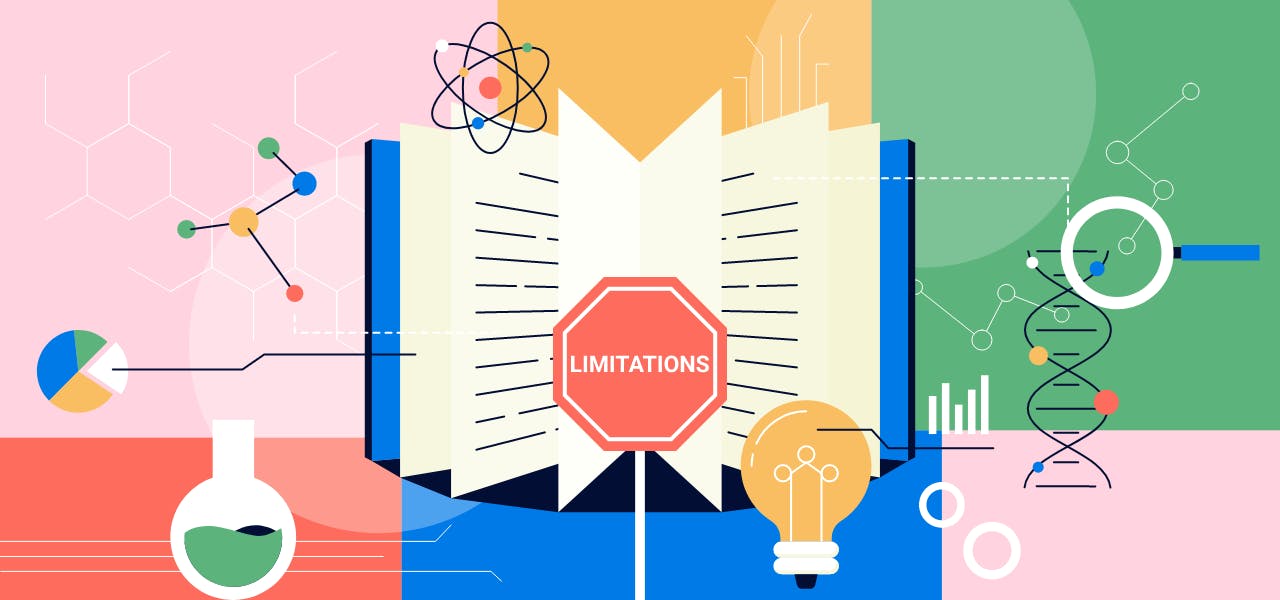As a society in general, we begin to cover up our mistakes and flaws early in life. We see these as shortcomings that make us less than perfect, disappoint others, and/or get us in trouble. It’s understandable to merge this thought process into your research and attempt to hide those limitations, but doing so could be dangerous to your outcome and your scholarly reputation.
Limitations in research studies happen all the time. The flaws and shortcomings are a natural part of not having unlimited funds, access to data, or a perfect methodology to follow. It’s nearly impossible to have a study that is completely without flaws and considers every potential factor, variable, and aspect.
Because of this common knowledge, it’s expected that your study has limitations, but it’s also expected that you’re honest and transparent about them and exhibit them in your writing. Doing so correctly doesn’t make you look bad; in fact, it shows that you have a solid understanding of the research you’re doing and where your limitations were throughout the project.
Why You Must Discuss Your Study’s Limitations
The entire point of a limitation is to discuss the potential weaknesses in your study. Why would you want to point them out? Well, the reality is that if you don’t discover them and discuss them yourself, someone else is likely to find them and share them for you. This can make your study look weak, as though you missed out on key flaws that may have impacted the overall result.
By addressing the limitations early, it shows that you knew about them and accounted for them as you went about the steps of performing your research. This strengthens your argument and allows you to identify problems before your peers or reviewers notice them. Pointing out those flaws and weaknesses shows that you have examined all the facets of your research and understand where your variables had limits. The more reasonable “weaknesses” you find and discuss, the better it shows you know your topic.
How to Include These “Flaws” in Your Paper
There is a fine line between including limitations and discussing everything that could have potentially gone wrong in your research. Your limitations should point out those areas where your study lacked the ability to cover a vast data set but shouldn’t discuss them in depth.
Your limitations are generally placed in the Discussion section, slid into your research article before the conclusion. Remember, the intent of including your limitations is to proactively discuss questions a peer or reviewer might have about why you didn’t cover a particular concept or area. For example, your study pool may have been small because you couldn’t access the funding to cover a wider number of participants, or you may have been missing a particular minority group because no one from that group volunteered for the study.
This section should be short and succinct. It will show the reader that you considered all the angles of your research and recognized the areas where you were unable to dig deeply enough to answer them. It explains why you chose this method of data collection over another or used the methodology that you chose over one that could have worked, as well. In essence, this is the part of the study where you go through and try to criticize every choice you made before someone else gets the opportunity to do so.
You can point out the mistakes you made, the choices that had other options, and where your limitations were in your article. After you do so, the peer reviewer or other readers feel confident that you know what you were doing, recognized the limitations, and reasonably worked around them.
Use Impactio to Enhance Your Work’s Credibility
Limitations are part of every scholar’s work. You can’t sit down and discuss the reasons behind theories proposed by long-dead scientists or generate complex mathematical formulas using irrational or infinite numbers and then see how they correlate to real-life problems. Some things simply can’t be accomplished within the scope of human limitations.
